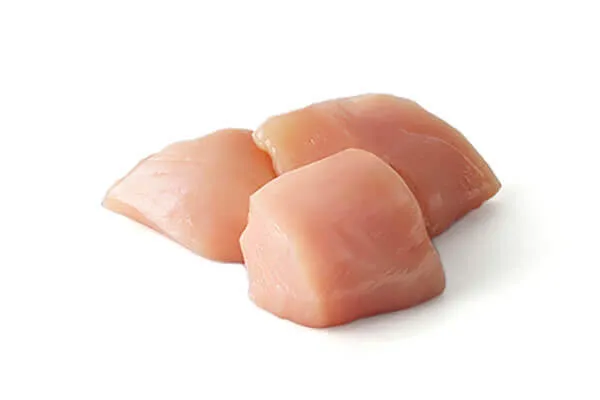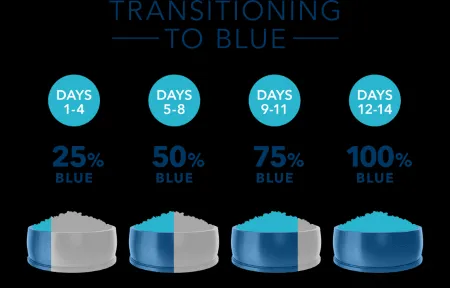Bringing a new puppy into your home is an exciting time, filled with joy and new responsibilities. One of the most critical aspects of ensuring your puppy thrives is providing them with the right nutrition. High-quality Puppy Dog Food is essential for their rapid growth, developing immune system, and boundless energy. Understanding what goes into a good puppy diet can make all the difference in setting your furry friend up for a long, healthy life. This guide will walk you through the key considerations when selecting the best food for your growing companion.
Why Puppy-Specific Dog Food Matters
Puppies have unique nutritional requirements that differ significantly from those of adult dogs. Their bodies are undergoing rapid development, necessitating higher levels of protein, calories, and specific vitamins and minerals to support bone, muscle, and organ growth. A balanced puppy diet also provides crucial nutrients like DHA (docosahexaenoic acid), an omega-3 fatty acid vital for cognitive and eye development, typically found in mother’s milk. Transitioning from milk to solid food is a critical stage, and a diet specifically formulated for puppies ensures they receive all the necessary building blocks for robust development. For those interested in understanding various pet food options, exploring [fresh pet dog food](https://dogcarestory.com/fresh-pet-dog-food/) can offer further insights into different formulations available on the market.
Essential Ingredients for Optimal Puppy Development
When scrutinizing puppy dog food labels, it’s vital to identify ingredients that support comprehensive development. A premium puppy formula should prioritize real, high-quality protein sources, balanced complex carbohydrates, essential fatty acids, and a rich blend of vitamins and minerals.
Quality Protein Sources
Protein is the cornerstone of a puppy’s diet, supporting muscle development, tissue repair, and providing sustained energy. Look for real meat as the first ingredient. Deboned chicken is an excellent choice, offering a lean and highly digestible protein. Ingredients like chicken meal and menhaden fish meal also provide concentrated protein, contributing to a robust dietary foundation that fuels your puppy’s active lifestyle. These protein sources ensure your puppy builds strong muscles and has ample energy for playtime and learning.
Wholesome Grains and Complex Carbohydrates
While meat is paramount, wholesome grains and complex carbohydrates play a crucial role in providing sustained energy. Ingredients such as brown rice, oatmeal, and sweet potatoes are excellent sources. Brown rice offers essential B vitamins and minerals, along with high-quality complex carbohydrates and fiber for healthy digestion. Oatmeal is another easily digestible grain rich in B vitamins, providing the energy puppies need. Sweet potatoes are packed with potassium, B vitamins, beta-carotene, phytochemicals, and carotenoids, all contributing to antioxidant support and a healthy immune system. These ingredients ensure a steady release of energy, preventing sugar spikes and crashes.
 A close-up image of fresh chicken, representing a high-quality protein source for puppy food.
A close-up image of fresh chicken, representing a high-quality protein source for puppy food.
Essential Fatty Acids for Brain and Coat Health
Essential fatty acids, particularly omega-3s, are critical for a puppy’s developing brain and nervous system, as well as maintaining a healthy skin and coat. Fish oil is a rich source of omega-3 fatty acids and DHA, which significantly aids cognitive function and supports overall well-being. Flaxseed also provides essential omega-3s and is an excellent source of fiber, assisting digestion and promoting a lustrous coat. These fatty acids are indispensable for sharp minds and healthy skin, preventing dryness and dullness.
Nutrient-Rich Fruits and Vegetables
Beyond the primary macronutrients, fruits and vegetables deliver a wealth of vitamins, minerals, and antioxidants. Carrots, for instance, are an excellent source of beta-carotene, fiber, vitamin K1, potassium, and antioxidants, all vital for a puppy’s immune system and vision. Blueberries are another powerhouse, providing vitamins C and E, potassium, and fiber, further enhancing antioxidant enrichment and supporting overall health. Incorporating such ingredients ensures a broad spectrum of nutrients that bolster natural defenses and support healthy development.
The Power of Antioxidant-Rich Formulas
For a puppy’s developing immune system, antioxidant-rich formulations are incredibly beneficial. A precise blend of antioxidants, vitamins, and minerals, often referred to as specialized “LifeSource Bits” in some premium brands, is carefully selected by veterinarians and animal nutritionists. These concentrated nutrients help support a strong immune system, meet specific life stage requirements, and promote healthy oxidative balance within the body.
The method of preparation for these nutrient blends is also important. Cold-forming processes, which minimize the amount of heat exposure during manufacturing, help to retain the potency of these heat-sensitive nutrients. This approach ensures that your puppy receives the maximum benefit from these vital ingredients, much like how cooking vegetables at lower temperatures preserves their nutritional value. Choosing a puppy dog food with such a specialized nutrient package can offer a significant advantage for your puppy’s overall health and vitality.
![]() A graphic illustrating the benefits of LifeSource Bits, showing icons for immune support, life stage requirements, and healthy oxidative balance.
A graphic illustrating the benefits of LifeSource Bits, showing icons for immune support, life stage requirements, and healthy oxidative balance.
What to Avoid in Quality Puppy Dog Food
Just as important as knowing what to include is understanding what to avoid in puppy dog food. High-quality formulas adhere to strict standards to ensure the best for your pet. Brands often follow a “True BLUE Promise” or similar commitment, which typically includes:
- Real Deboned Meat as the First Ingredient: Signifies a protein-rich formula.
- No Chicken (or Poultry) By-Product Meals: These are often lower-quality protein sources.
- No Corn, Wheat, or Soy: Common allergens and fillers that offer limited nutritional value for many puppies.
- No Artificial Flavors or Preservatives: These can be detrimental to a puppy’s health over time.
Prioritizing a food that eschews these undesirable ingredients helps prevent potential digestive issues, allergies, and ensures your puppy is consuming only beneficial nutrients. When researching options, reliable sources like [dog food advisor best dog food](https://dogcarestory.com/dog-food-advisor-best-dog-food/) can provide valuable insights into brand commitments and ingredient quality.
 A graphic featuring three shields, representing the True BLUE Promise: "Real Deboned Chicken First Ingredient," "No Chicken By-Product Meals, Corn, Wheat or Soy," and "No Artificial Flavors or Preservatives."
A graphic featuring three shields, representing the True BLUE Promise: "Real Deboned Chicken First Ingredient," "No Chicken By-Product Meals, Corn, Wheat or Soy," and "No Artificial Flavors or Preservatives."
Understanding Puppy Feeding Guidelines
Proper feeding is crucial for managing your puppy’s growth and energy levels. Always refer to the specific feeding guidelines provided by the puppy dog food manufacturer, as caloric content and nutrient density vary between brands.
Meal Frequency
Puppies have small stomachs and high energy demands, so frequent, smaller meals are generally recommended:
- Until 6 Months Old: 3 Meals Per Day
- 6-12 Months Old: 2 Meals Per Day
Feeding Chart Explanation
Feeding charts usually provide a range of cups per day based on your puppy’s weight and age. For example:
| Weight (lbs.) | Cups per day (1-3 mos.) | Cups per day (3-5 mos.) | Cups per day (5-7 mos.) | Cups per day (7-12 mos.) |
|---|---|---|---|---|
| Up to 5 lbs. | ½ – 1 | ½ – ¾ | ¼ – ½ | ¼ – ½ |
| 6 to 10 lbs. | 1 – 1 ½ | ¾ – 1 | ½ – 1 | ½ – ¾ |
| 11 to 20 lbs. | 1 ½ – 2 ½ | 1 – 1 ¾ | 1 – 1 ½ | ¾ – 1 ¼ |
| 21 to 40 lbs. | 2 ½ – 4 ¼ | 1 ¾ – 2 ¾ | 1 ½ – 2 ½ | 1 ¼ – 2 ¼ |
| 41 to 60 lbs. | 4 ¼ – 5 ¾ | 2 ¾ – 3 ¾ | 2 ½ – 3 ½ | 2 ¼ – 3 |
Note: Use a standard 8-oz. measuring cup. Individual puppy’s requirements may vary from this chart due to age, breed, environment, and activity level. Always adjust food as required to maintain optimal body condition and consult your veterinarian if you are unsure.
Transitioning to New Food
When introducing a new puppy dog food, always do so gradually over 7-14 days to avoid digestive upset. Start by mixing 25% of the new food with 75% of their old food, gradually increasing the proportion of the new food each day until the transition is complete.
Preparation Options
Most dry puppy foods can be served directly from the bag. For enhanced flavor and aroma, especially for picky eaters or very young puppies, you can add warm water and mix. Remember to always provide a clean bowl of cool, fresh water available at all times, as proper hydration is essential. If you’re ever concerned about what to feed your puppy during illness, consulting resources on [what to give a sick puppy to eat](https://dogcarestory.com/what-to-give-a-sick-puppy-to-eat/) can be helpful, but veterinary advice is always best.
 A graphic illustrating puppy feeding guidelines with images of puppies at different ages and corresponding meal frequencies.
A graphic illustrating puppy feeding guidelines with images of puppies at different ages and corresponding meal frequencies.
Nutritional Analysis: What the Numbers Mean
Understanding the Guaranteed Analysis on a puppy dog food label provides crucial insight into its nutritional content. This table typically lists minimum and maximum percentages of key nutrients. For puppies, look for:
| Ingredient | Percentage |
|---|---|
| Crude Protein | 36.0% min |
| Crude Fat | 16.0% min |
| Crude Fiber | 5.0% max |
| Moisture | 10.0% max |
| DHA | 0.15% min |
| Calcium | 1.2% min |
| Phosphorus | 1.0% min |
| Choline | 2,750 mg/kg min |
| ARA* | 0.05% min |
| Omega 3 Fatty Acids* | 1.0% min |
| Omega 6 Fatty Acids* | 2.75% min |
(*Not recognized as an essential nutrient by the AAFCO Dog Food Nutrient Profiles.)
High crude protein and fat levels are characteristic of puppy foods, supporting their energy and growth needs. DHA, calcium, and phosphorus are particularly important for skeletal and brain development. Always ensure the food is formulated to meet the nutritional levels established by the AAFCO Dog Food Nutrient Profiles for growth, which confirms it’s a complete and balanced diet. It’s also worth noting that specific breeds, like German Shepherds, may have unique dietary needs, so researching [what can german shepherds eat and not eat](https://dogcarestory.com/what-can-german-shepherds-eat-and-not-eat/) can provide tailored advice. Additionally, always be cautious about [what human food is good for puppies](https://dogcarestory.com/what-human-food-is-good-for-puppies/) and consult your vet before introducing new items to their diet.
Conclusion
Selecting the best puppy dog food is one of the most important decisions you’ll make for your new companion. By focusing on high-quality ingredients like real meat, wholesome grains, essential fatty acids, and nutrient-rich fruits and vegetables, you can provide the strong nutritional foundation your puppy needs to grow into a healthy, happy adult. Remember to always adhere to feeding guidelines, transition new foods gradually, and ensure constant access to fresh water. While this guide provides a comprehensive overview, individual puppy requirements can vary. Therefore, always consult with your veterinarian to tailor the best dietary plan for your unique puppy’s age, breed, and activity level. Prioritizing their nutrition now will pay dividends in their long-term health and vitality.
